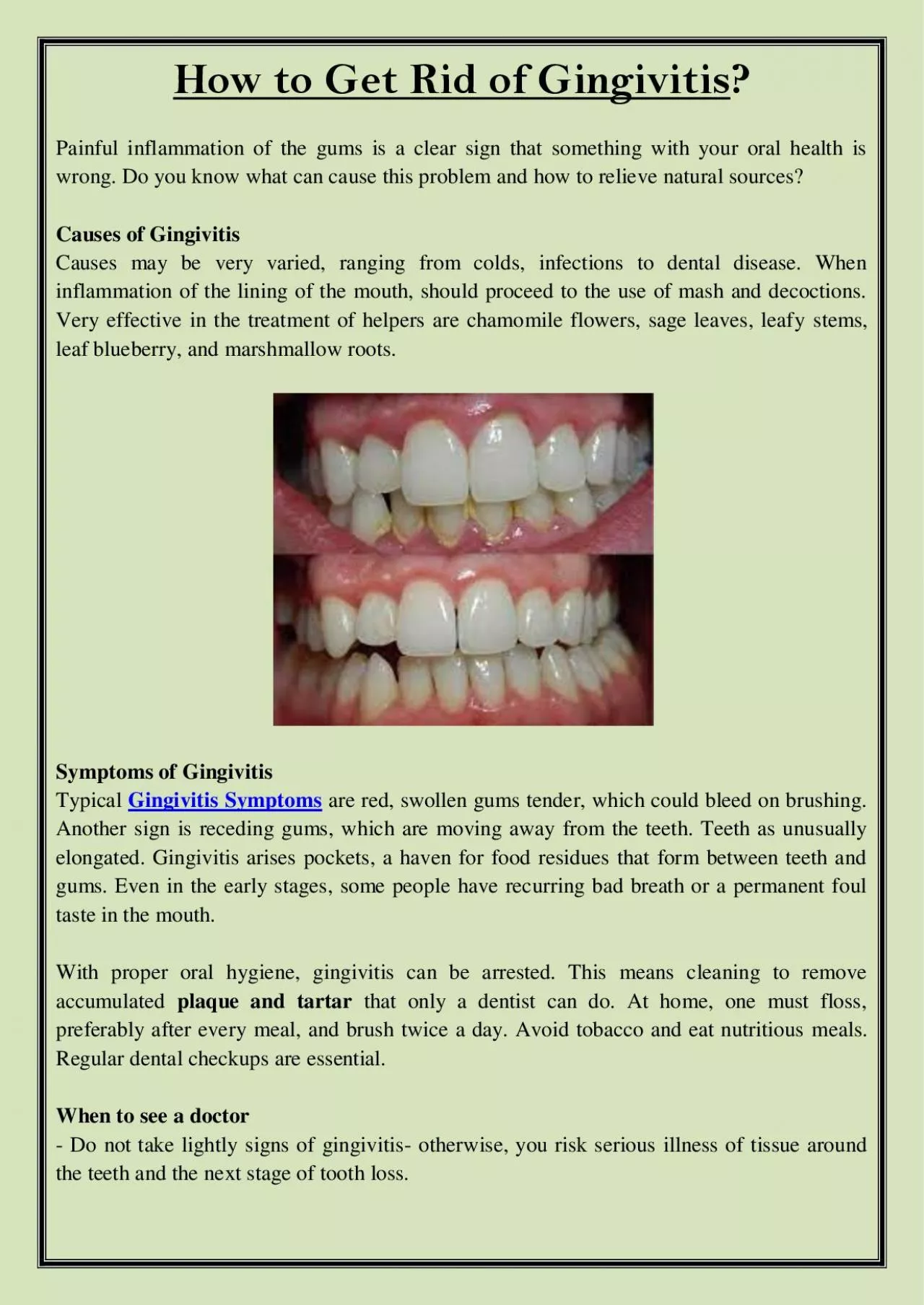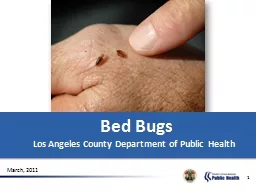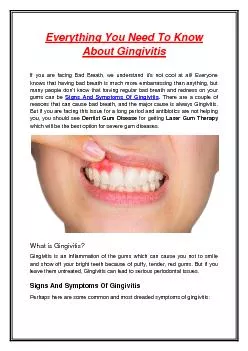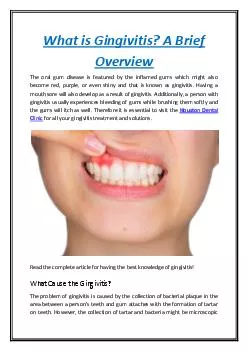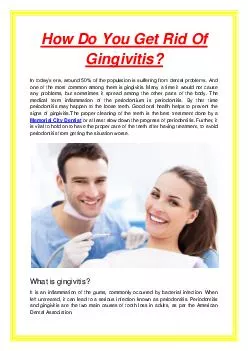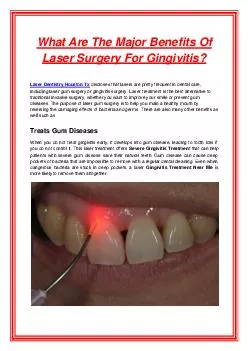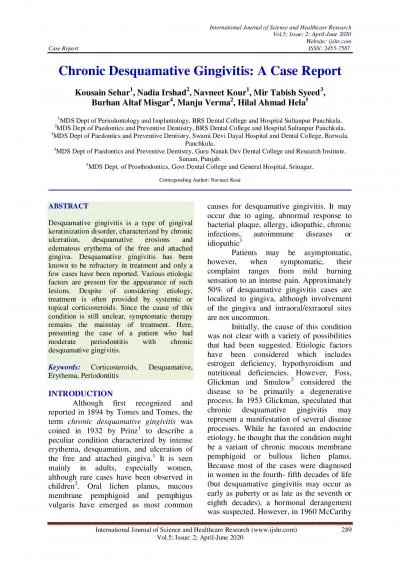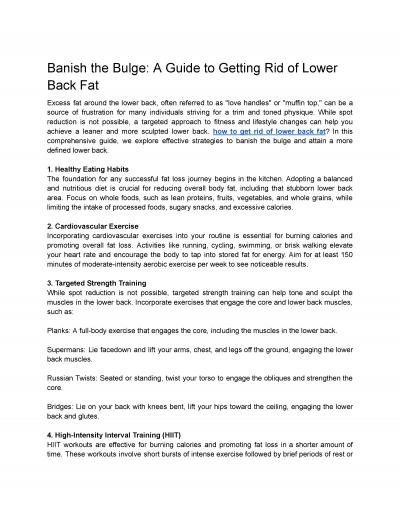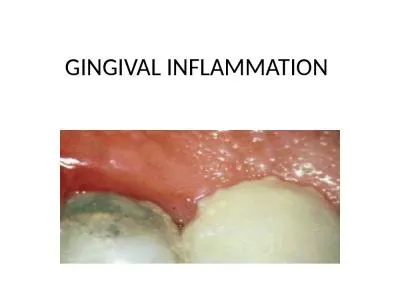PDF-How to Get Rid of Gingivitis?
Author : jeffreylind | Published Date : 2021-08-04
Gingivitis is an early stage of gum disease caused by the buildup of plaque and it is reversible so visit our Urbn Dental Midtown office at the first signs of symptoms
Presentation Embed Code
Download Presentation
Download Presentation The PPT/PDF document "How to Get Rid of Gingivitis?" is the property of its rightful owner. Permission is granted to download and print the materials on this website for personal, non-commercial use only, and to display it on your personal computer provided you do not modify the materials and that you retain all copyright notices contained in the materials. By downloading content from our website, you accept the terms of this agreement.
How to Get Rid of Gingivitis?: Transcript
Download Rules Of Document
"How to Get Rid of Gingivitis?"The content belongs to its owner. You may download and print it for personal use, without modification, and keep all copyright notices. By downloading, you agree to these terms.
Related Documents

